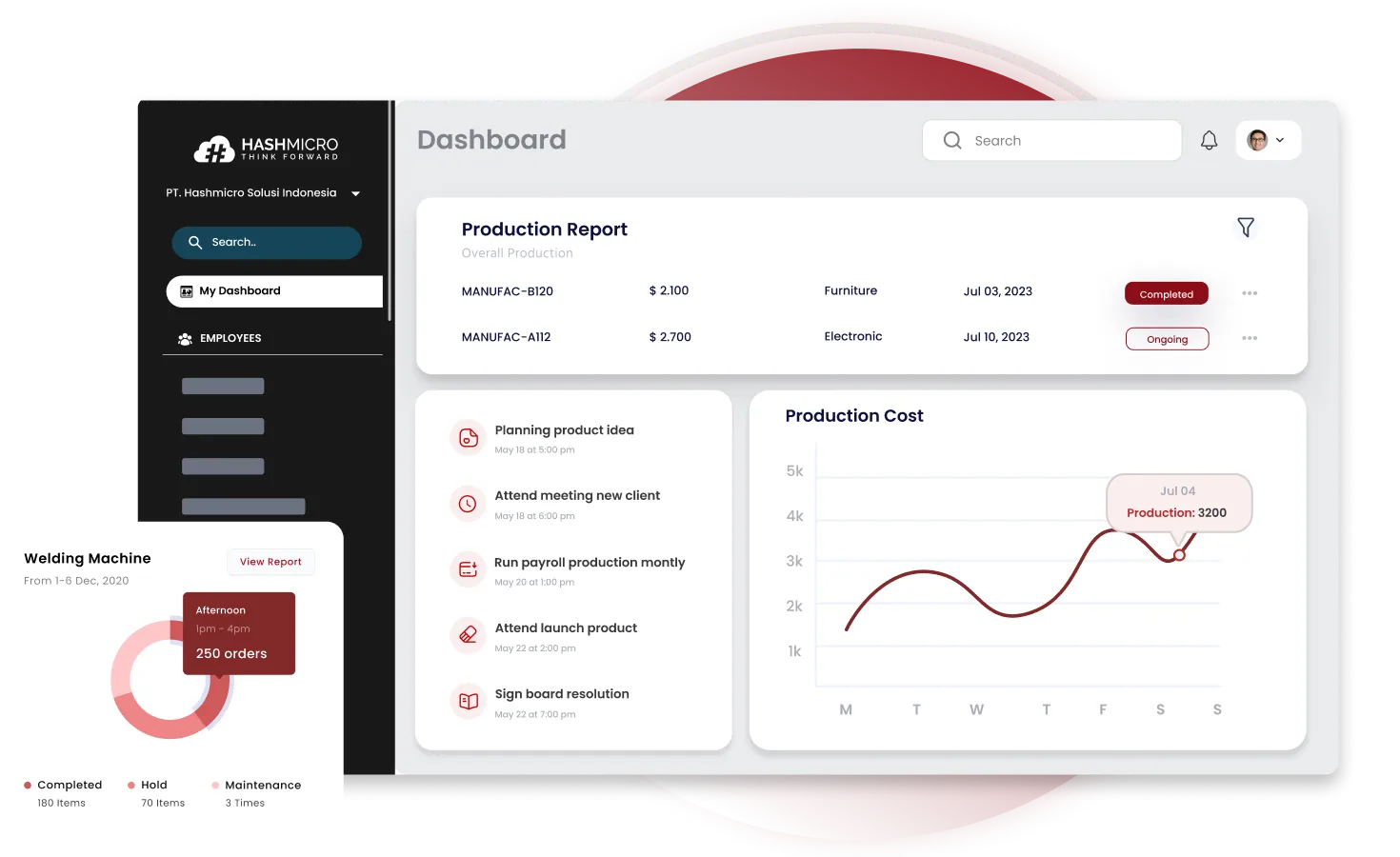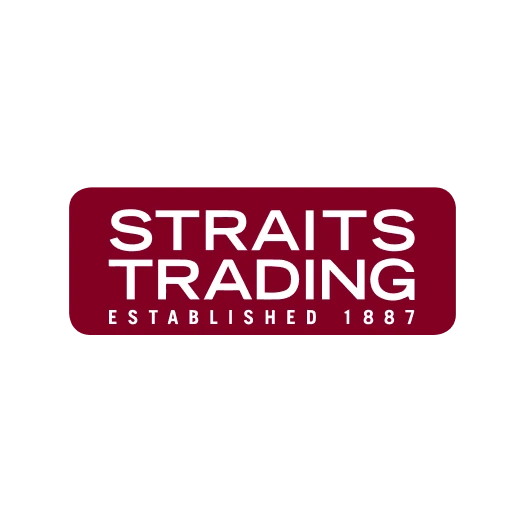The decoupling point is a critical concept in supply chain management. It defines the point where inventory is positioned to balance supply and demand efficiently, acting as a bridge between production and customer fulfillment.
Studies show that companies strategically managing decoupling points can reduce lead times by up to 30% and cut inventory costs by 20%, emphasizing how this concept directly improves operational efficiency.
With HashMicro Supply Chain, businesses can monitor and adjust decoupling points in real-time, using automation and data insights to streamline operations without overstocking or understocking.
Understanding and applying the decoupling point effectively bridges planning and execution, helping businesses respond faster to market demands while maintaining cost efficiency.
Key Takeaways
|
What is the Decoupling Point?
The decoupling point is the stage in a supply chain where inventory separates production from customer demand. It shows what inventory to hold and how to manage it for faster response and minimal waste.
By identifying the decoupling point, businesses can decide whether to produce goods to stock, make to order, or adopt a hybrid approach. Proper management reduces lead times, prevents overstocking, and allows for a more flexible response to market fluctuations.
Companies can also use this insight to align procurement, production, and distribution strategies effectively, ensuring customer needs are met without excessive costs.
What are the Benefits of Decoupling Points?
Understanding the decoupling point supply chain is not just about inventory placement, it’s about creating a more responsive and efficient supply chain. Here are four key benefits:
1. Faster response to demand
By positioning products closer to where they’re needed, companies can reduce lead times and fulfill orders more quickly. This ensures customers receive their products on time, improving satisfaction and trust in the brand.
2. Reduced inventory costs
Holding optimal stock levels prevents overstocking, lowers storage costs, and minimizes waste. Companies can allocate capital more efficiently and avoid tying up resources in excess inventory.
3. Improved production planning
Clear insights into what and when to produce help streamline operations and avoid unnecessary delays. This allows for better coordination between procurement, manufacturing, and distribution teams, reducing bottlenecks.
4. Enhanced supply chain flexibility
Businesses can adapt more easily to market fluctuations, ensuring operations remain smooth even during demand changes. This flexibility also supports quick responses to unexpected events, such as supply disruptions or seasonal spikes.
Which Objectives Guide Your Supply Chain?

Determining the right point in your supply chain to hold inventory is crucial for maintaining efficiency and resilience. By positioning stock strategically, companies can protect operations from fluctuations in demand and supply. Key objectives include:
- To enhance supply chain flexibility
- To optimise inventory usage
Optimising the decoupling point ensures smoother operations, quicker response to market changes, and more effective use of resources across procurement, production, and distribution.
By leveraging AI for supply chain, businesses can optimize inventory placement, improve forecasting accuracy, and make faster data-driven decisions.
Key Factors Determine the Position of the Decoupling Point
Placing the supply chain decoupling point correctly is crucial for a responsive and efficient supply chain. Key factors include:
1. Demand variability
High fluctuations in customer demand require inventory to be positioned closer to the point of sale or consumption. This ensures products are available when needed, reduces the risk of stockouts, and allows companies to respond quickly to changing market trends.
2. Supplier lead times
Longer or inconsistent supplier lead times may require holding inventory earlier in the supply chain to prevent delays in production and delivery. This also provides a buffer against supplier disruptions and ensures continuous operations.
3. Production capacity
Limited production capacity affects how much can be produced at a time. Positioning inventory strategically helps smooth out production schedules, avoid bottlenecks, and maintain steady supply without overburdening the production system.
4. Customer service requirements
The level of service expected by customers, including delivery speed and order accuracy, determines where inventory should be held to meet these expectations effectively. Meeting these standards strengthens customer trust and enhances competitiveness in the market.
How does the Decoupling Point Influence Your Supply Chain Strategy?
The position of the decoupling point shapes how your supply chain operates, affecting inventory management, production planning, and customer fulfillment. Key influences include:
1. Determines production approach
The decoupling point dictates whether products are made-to-stock, make-to-order, or use a hybrid strategy. This influences production schedules, resource allocation, and flexibility in responding to demand.
2. Impacts inventory management
Strategic placement of the decoupling point helps decide where and how much inventory to hold, reducing holding costs while ensuring availability. It balances supply-side risks with demand-side responsiveness.
3. Affects lead times and delivery
By optimising the decoupling point, businesses can shorten lead times and improve delivery performance. Products are positioned closer to demand, enabling faster order fulfilment.
4. Guides risk mitigation
The decoupling point helps protect the supply chain against uncertainties such as supplier delays or sudden demand spikes. Proper placement allows companies to maintain service levels even in volatile conditions.
HashMicro: Your Solution for Strategic Decoupling Point Management
Managing the decoupling point effectively requires visibility and data-driven decisions. HashMicro Supply Chain provides real-time inventory tracking, demand analysis, and automated alerts to help businesses position stock strategically.
With HashMicro, companies can streamline operations, reduce lead times, and optimise resources. This approach improves efficiency, cuts costs, and ensures consistent customer satisfaction, giving your business a competitive edge.
Key features of HashMicro Supply Chain Management:
- Inventory Management: Monitor and manage stock levels across multiple locations to maintain optimal inventory and prevent shortages or overstocking.
- Procurement Management: Streamline purchasing and supplier processes to ensure timely supply and smooth production flow.
- Order Management: Efficiently track and manage customer orders from receipt to fulfillment, improving accuracy and service.
- Shipment Tracking: Keep real-time visibility on shipments to ensure on-time delivery and quickly address delays.
- Return Management: Automate and simplify the return process to enhance operational efficiency and customer satisfaction.
- Planning & Forecasting: Use data-driven insights to predict demand, plan production, and position inventory strategically.
- Decoupling Point Optimization: Determine strategic inventory points to balance supply and demand, reduce lead times, and mitigate supply chain risks.
Conclusion
The decoupling point is a critical concept in supply chain management that defines where inventory separates production from customer demand. Understanding its role helps businesses balance responsiveness and efficiency.
Proper management of the decoupling point is important because it reduces lead times, optimizes resource utilization, mitigates risks from demand and supply fluctuations, and ultimately improves customer satisfaction.
HashMicro Supply Chain provides a comprehensive solution to manage decoupling points strategically. With features like real-time inventory tracking, planning & forecasting, and decoupling point optimization, businesses can streamline operations, reduce costs, and respond faster to market changes.
Take control of your supply chain today. Request a free demo of HashMicro Supply Chain and experience smarter, more efficient inventory management.
FAQ About Decoupling Point
-
What are decoupling points, and why are they significant?
The decoupling point plays a key role in supply chain design by balancing efficiency and responsiveness. It marks the stage where the focus shifts from cost-effective production to meeting customer demand quickly.
-
What is the decoupling point in DDMRP?
Decoupling points are locations within the supply chain where inventory buffers are placed, monitored, and replenished. For each point, businesses define buffer profiles, including minimum and maximum stock levels, reorder points, and replenishment quantities.
-
What is the process of decoupling?
Decoupling inventory refers to storing additional raw materials or work-in-progress items at various production stages to prevent delays or shutdowns if one stage experiences low stock or operational issues.



















































